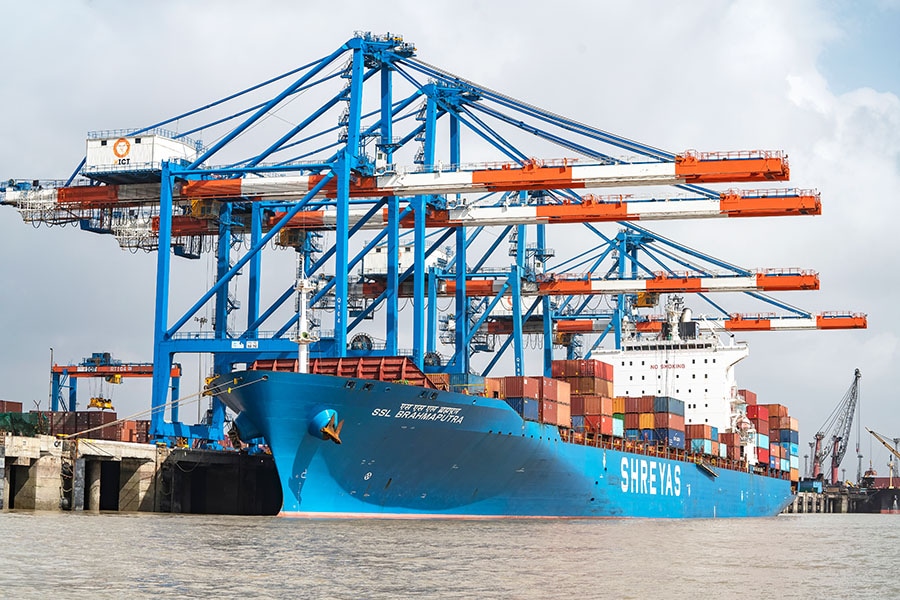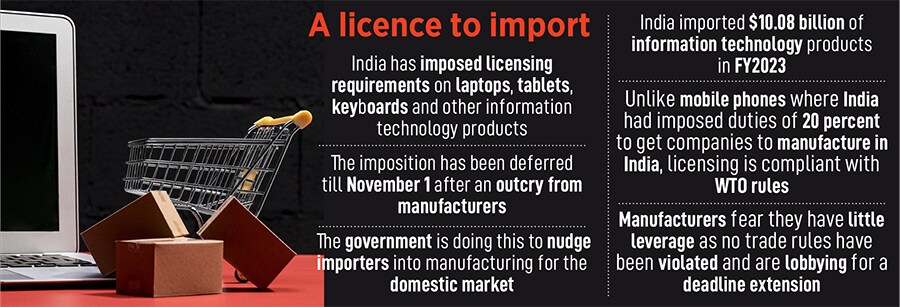
Why have import licences riled laptop makers
There's no denying that India's recent decision to impose licensing requirements for the import of laptops caught their makers off-guard. Both sides must now work on their next move
 At stake is the $10.08 billion worth of laptops, tablets, keyboards and printers that India imported in the year ended March 2023.
Image: Shutterstock
At stake is the $10.08 billion worth of laptops, tablets, keyboards and printers that India imported in the year ended March 2023.
Image: Shutterstock
Sample this: As a foreign manufacturer of laptops, tablets and handheld devices you’ve been importing them into a large, promising market without paying any duty. The products are made in spotlessly clean vacuum factories in China, Vietnam or Taiwan, loaded on containers only to be waived in through ports across India. At zero duty. From there they make their way across the country to wholesale distributors, resellers and malls. The ones bought online are shipped directly to consumer homes.
Now, overnight, the rules of the game change and one has to apply for an import licence. Then amid howls of protest the implementation is deferred to November 1, 2023. The Indian government makes all the right noises: The licences will be granted quickly, there will be no tariffs imposed and companies can import as much as they like.
There is however an important subtext that no one misses. India wants these products to be made in India and what is a nudge today could become a push tomorrow. It sees its large domestic market as enough of an incentive and companies that don’t fall in line may see themselves shut out.
The move to increase assembly and manufacturing in India comes at a time when global trade bonds are fraying. Economists and trade representatives Forbes India spoke to were sympathetic to the stance of the Indian government. While they may have differed in the manner in which it was done, there was agreement that supply chains must be brought closer home. “I’m not as mortified as others by this move,” said Abheek Barua, chief economist at HDFC Bank.
At stake is the $10.08 billion worth of laptops, tablets, keyboards and printers that India imported in the year ended March 2023. Bringing this manufacturing to India would boost jobs and save on foreign exchange, once a higher level of localisation is achieved. In time this could also spur manufacturers to use India as an export base as has been done in the case of entry-level mobile phones and the iPhone.








